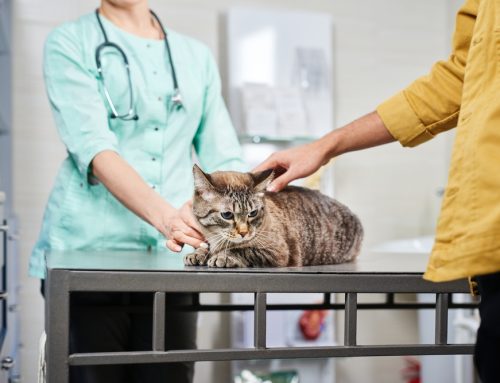Allergies are common in pets, but misconceptions about the causes, diagnosis, and treatment can hinder appropriate management. Our Twin Maples Veterinary Hospital team frequently sees pets affected by allergies, and we tell the truth about common myths associated with allergic cats and dogs.
1: Pet allergies cause sneezing and nasal congestion
Signs in humans with allergies usually include sneezing, nasal congestion, and red, itchy eyes. While some pets respond this way to a triggering allergen, most experience skin problems, such as itchiness, hair loss, and inflammation. In addition, pets with food allergies can also have gastrointestinal (GI) signs that may include diarrhea, excessive gas, vomiting, and abdominal pain.
If your pet is itchy, make an appointment as soon as possible with our Twin Maples Veterinary Hospital team, because chronic inflammation and scratching can lead to skin damage and potentially to secondary problems, such as infection.
2: Pets commonly have food allergies
Food allergies are uncommon in pets, affecting about only 1% of dogs and cats. The most common pet allergy is flea allergy dermatitis (FAD), which is caused by a hypersensitivity to proteins in flea saliva. A single flea bite can cause severe, body-wide itching, but skin lesions and hair loss are most commonly appreciated on the lower back, abdomen, and inner thighs. The only effective treatment is to eradicate all fleas from your pet’s coat and environment and to keep your pet on year-round flea prevention to avoid recurrence.
3: Pets affected by FAD are flea-infested
FAD pets are extremely itchy and to help alleviate the skin irritation, they lick, chew, and scratch almost continuously, which can remove fleas in their coat. This means that pet owners often find no fleas on their itchy pet, so they decide that other issues must be causing their pet’s skin condition. Typically, the first step in determining the cause behind an itchy pet is putting them on a flea preventive to see if that helps alleviate the problem.
4: Allergy testing is used to diagnose pet allergies
This is true to some extent. The most common allergy types in pets are FAD and atopy. When your veterinarian suspects atopy, which is an allergic reaction to environmental factors, such as pollens, molds, and dust mites, they may recommend allergy testing, which helps determine the allergen that triggered your pet’s response. This information is then used to avoid those allergens, if possible, and can be used to create allergen-specific immunotherapy (i.e., allergy shots). Allergy testing is not useful to diagnose the ingredient that is causing your pet’s food allergy.
5: Allergy shots cure pet allergies
Allergy shots are considered the gold-standard treatment in managing atopic pets, but they do not completely cure the allergy. Allergen-specific immunotherapy involves administering gradually increasing amounts of the causative allergen to your pet to desensitize their response. The process typically takes about 6 to 12 months to start working. Some pets don’t respond to treatment, and many pets who do respond will likely need additional therapies to manage their condition.
6: Food allergies in pets are caused by grains
The pet food market has numerous grain-free options, touting their advantages for food-allergic pets, but the truth is that most food allergies are triggered by proteins, such as poultry, beef, dairy, and eggs.
7: Food allergies in pets can be treated by switching their food

Treating a food allergy involves first conducting a food elimination diet to diagnose the triggering ingredient, followed by a challenge trial, and then avoiding the problematic food. Simply switching your pet’s food likely won’t help unless the ingredient or ingredients that caused the reaction aren’t present in any amount in the new diet.
Contact our Twin Maples Veterinary Hospital team sooner rather than later if your pet is itchy. We can diagnose the cause and devise a treatment strategy to help alleviate their discomfort.









Leave A Comment